Studies
Over 50 independent scientific studies show improved and optimal absorption of vitamins and minerals when they are in a FOOD-GROWN® form.

Over 50 independent scientific studies show improved and optimal absorption of vitamins and minerals when they are in a FOOD-GROWN® form.
FOOD-GROWN® Calcium

Comparison of different forms of calcium on blood pressure of normotensive young males
J.A. Vinson, T. Mazur and P. Bose, Nutrition Reports International, 36 (3), 497-505, 1987
Food-Grown® Calcium brought about an 8.2% decrease in diastolic blood pressure after seven weeks’ supplementation, whereas calcium gluconate brought about no significant change. Additionally, all subjects in the calcium gluconate group complained of gastrointestinal distress, which did not happen in the FoodGrown® Calcium group.



FOOD-GROWN® Minerals
Comparison of the bioavailability of trace elements in inorganic salts, amino acid chelates and yeast
Proceedings on mineral elements Part 2, 1981: 615-621
Yeast is the most bioavailable form of the element and is therefore the best form for trace element supplementation for animal and man.
FOOD-GROWN® Zinc

Nutrient Availability, Chemical and Biological Aspects. Royal Society of Chemistry
Comparative human bioavailability of zinc, 1989
Food-Grown® Zinc was found to be 75% more absorbed than zinc sulphate and 58% better absorbed than zinc gluconate. In addition the Food-Grown® Zinc was absorbed over a longer time period – a natural ‘time release’.
FOOD-GROWN® Chromium
Comparative effect of various forms of chromium on serum glucose
An assay for biologically active chromium.
J.A. Vinson, K-H. Hsiao, Nutritional Reports International, 32, (1), 1985
Food-Grown® Chromium reduced serum glucose by 16.8%, compared to only 6% with chromium chloride and 5.7% with brewer’s yeast. Serum glucose reduction is considered a useful measure for the biological activity of chromium.
FOOD-GROWN® Antioxidants
Effect of vitamins A, E and a citrus extract in vitro and in vivo lipid peroxidation
J.A. Vinson and C. Hsu, Medical Science Research Journal 1992; Vol 20:145–146
Diabetes and hyperlipaemia produce plasma elevations in LPO of 20-40% above normal in humans. The combination AOX supplement decreased plasma LPO by 30% in normal subjects.
Effects of vitamin antioxidant supplementation on cell kinetics of patients with adenomatous polyps
R.J. Cahill, K. O’Sullivan, P.M. Mathias, S. Beattie, H Hamilton, and C. O’Morain, Gut, 1993; Vol 34: 963-967
The findings of this study confirm a significant association between blood levels of antioxidants and cholesterol with risk of colonic polyps and colorectal cancer.
Over 50 independent scientific studies show improved and optimal absorption of vitamins and minerals when they are in a FOOD-GROWN® form.
FOOD-GROWN® Vitamin C

Inhibition of protein glycation and advanced glycation end products by ascorbic acid and other vitamins and nutrients
J.A. Vinson and T.B. Howard, Nutritional Biochemistry, 1996, volume 7, pp659-663
Serum protein glycation was reduced by an average of 46.8% after four weeks’ supplementation with Food-Grown® Vitamin C. Protein glycation is a significant mechanism behind the development of diabetic complications and premature ageing.
In Vitro and In Vivo Lipoprotein Antioxidant Effect of a Citrus Extract and Ascorbic Acid on Normal and Hypercholesterolemic Human Subjects
J.A. Vinson and J. Jang, Journal of Medicinal Food 2001;4(4):187-192
Food-Grown® Vitamin C significantly lowered triglycerides levels, whereas neither isolated vitamin C nor vitamin E did. The synergism between vitamin C and its associated food components in citrus is highlighted. Increased triglyceride levels are implicated with increased risk of heart disease.
Comparative bioavailability to humans of ascorbic acid alone or in a citrus extract
J.A. Vinson, P. Bose, American Journal of Clinical Nutrition 1988; Sep:48 (3):601-4
Food-Grown® Vitamin C was found to be 35% more absorbed than the isolate ascorbic acid. Food-Grown® Vitamin C was also found to be better retained within the body than ascorbic acid, as demonstrated by lower excretion in the urine.
Effect of selenium and vitamin C on colonic crypt cell proliferation
One-year follow-up study. R.J. Cahill, K. O’Sullivan, S. Beattie, H. Hamilton, and C. O’Morain, European Journal of Cancer Prevention, 1993;Vol. 2 (1): 28
The study demonstrated that long-term supplementation with Food-Grown® Vitamin C and Selenium reduce the colonic crypt cell proliferation in patients with adenomatous polyps.
Celladenomatous polyps. kinetic effects on selenium and vitamin C in subjects
R.J. Cahill, K. O’Sullivan, S. Beattie, H. Hamilton, and C. O’Morain, Irish Journal of Medical Science, 1993; Vol 162(7), Page 285.
This study demonstrated that long-term supplementation with Food-Grown® Vitamin C and Selenium reduces the colonic crypt cell proliferation in patients with adenomatous polyps.
Food-Grown® Vitamin C complex may beneficially affect haemostasis and fibrin network structure in hyperlipidaemic patients
D. Loots, W. Oosthuizen, M. Pieters, C. Spies, and H.H. Vorster, Blood Coagulation & Fibrinolysis, 2004, Vol. 15(8), Pages 677-685
The Food-Grown® Vitamin C decreased the initiation of haemostasis, and led to a compensatory reduction in fibrinolysis. It therefore may be protective of cardiovascular disease by causing a new reduced steady state of haemostatic balance and less rigid clots (increased compaction).


Name of study: Comparative bioavailability to humans of ascorbic acid alone or in a citrus extract
Conducted by: J.A. Vinson, P. Bose
Publication: American Journal of Clinical Nutrition 1998; Sep:48 (3):601-4
FOOD-GROWN® Vitamin C was found to be 35% better absorbed than the isolate ascorbic acid.
FOOD-GROWN® Vitamin C was also found to be better retained within the body than ascorbic acid, as demonstrated by lower excretion in the urine.


Name of study: Comparison of the bioavailability of trace elements in inorganic salts, amino acid chelates and yeast
Conducted by: D. Southgate, I.T. Johnson and G.R. Fenwick
Publication: Proceedings on mineral elements Part 2, 1981: 615-621
Yeast is the most bioavailable form of the element and is therefore the best form of trace element supplementation for animal and man.
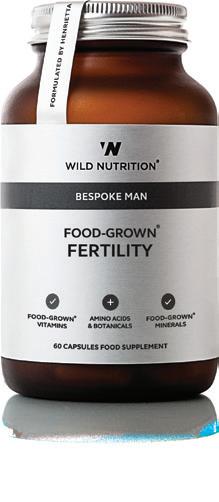
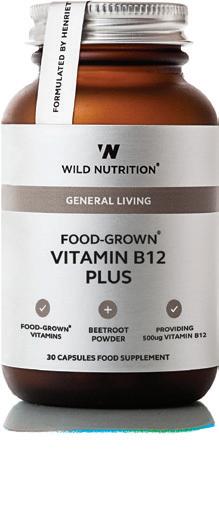
Name of study: Nutrient availability: Chemical and Biological Aspects
Conducted by: J.A. Vinson et al
Publication: Royal Society of Chemistry, Scranton, USA. 1989
In serum, FOOD-GROWN® Vitamin B12 had a significantly greater bioavailability than synthetic isolate forms and presented systemic benefits for pernicious anaemia where the synthetic isolate form did not.
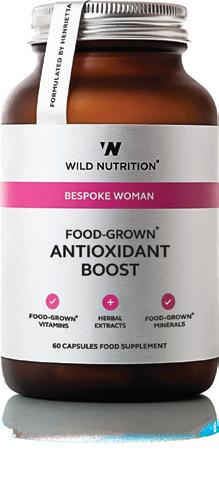
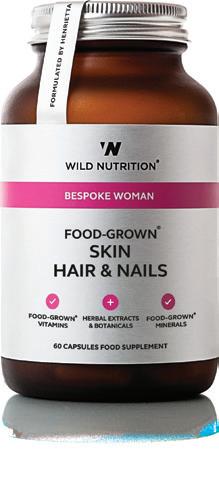
Name of study: Nutrient availability: Chemical and Biological Aspects
Conducted by: J.A. Vinson et al
Publication: Royal Society of Chemistry, Scranton, USA. 1989
FOOD-GROWN® Vitamin E was 9.4 times better retained than the synthetic ‘natural form’. Thus, the FOOD-GROWN® powder was significantly more bioavailable.

Name of study: Nutrient availability: Chemical and Biological Aspects
Conducted by: J.A. Vinson et al .
Publication: Royal Society of Chemistry, Scranton, USA. 1989
Results indicate that FOODGROWN® Selenium is protective against mercury and cadmium toxicity .


Name of study: Nutrient availability: Chemical and Biological Aspects
Conducted by: J.A. Vinson et al .
Publication: Royal Society of Chemistry, Scranton, USA. 1989
The relative bioavailability of iron amino acid chelate was 57% and 72% in the blood and liver respectively, whereas our FOOD-GROWN® Iron’s bioavailability was 101% and 121% in the blood and liver respectively.


Name of study: Nutrient availability: Chemical and Biological Aspects
Conducted by: J.A. Vinson et al
Publication: Royal Society of Chemistry, Scranton, USA. 1989
FOOD-GROWN® Calcium was found to be better absorbed than either calcium carbonate or calcium gluconate.
FOOD-GROWN® Vitamin D3
Analytical Study on Food-Grown® Vitamin D3 Laboratory for Nutritional Supplement
Analysis, Dr. Jeffrey Bland Ph.D., Linus Pauling Institute of Science and Medicine, Palo Alto, CA, November 25, 1985
Food-Grown® Vitamin D-3 contains significant amounts of vitamin D metabolites, the active prohormone (25-hydroxy D2 and D3) and the active hormone (1,25-hydroxy D2 and D3).
FOOD-GROWN® Vitamin E
Bioavailability of vitamin E
Nutrient Availability: Chemical and Biological Aspects. Professor Joe A. Vinson et al. Royal Society of Chemistry, Scranton, USA. 1989
Food-Grown® Vitamin E was 9.4 times better retained than the synthetic ‘natural form’. Thus, the Food-Grown® powder was significantly more bioavailable.
The results of a randomised double-blind controlled trial of Food-Grown® Vitamin E on human fertility
Department of Human & Teratology, National Institute of Hygiene, WHO Collaborating Center for the Community Control of Hereditary Diseases
FOOD-GROWN® Vitamin B12
Bioavailability of vitamin B12
Nutrient Availability: Chemical and Biological Aspects. Professor Joe A. Vinson et al. Royal Society of Chemistry, Scranton, USA. 1989
In serum, Food-Grown® Vitamin B12 had a significantly greater bioavailability than synthetic isolate forms, and presented systemic benefits for pernicious anaemia where the synthetic isolate form did not.
This study demonstrated that the Food-Grown® Vitamin E improved human fertility.


FOOD-GROWN® Selenium

Selenium protection of heavy metal toxicity
Nutrient Availability: Chemical and Biological Aspects. Professor Joe A. Vinson et al. Royal Society of Chemistry, Scranton, USA. 1989
The results indicate that Food-Grown® Selenium is protective against mercury and cadmium toxicity .
Relative human bioavailability of sodium selenite and high selenium yeast
Nutrient Availability: Chemical and Biological Aspects. Professor Joe A. Vinson et al. Royal Society of Chemistry, Scranton, USA. 1989
Food-Grown® Selenium was 22% better absorbed than sodium selenite, and also remained in the blood for a longer period of time. Bioavailability of amino acid chelate form in blood was 60% compared to Food-Grown®, which was 122%.
Liver bioavailability for amino acid chelate form was 146% compared to 226% for the Food-Grown® form.

FOOD-GROWN® Magnesium
Bioavailability of magnesium
Nutrient Availability: Chemical and Biological Aspects. Professor Joe A. Vinson et al. Royal Society of Chemistry, Scranton, USA. 1989
Food-Grown® Magnesium was significantly better absorbed than either magnesium oxide or magnesium glycinate.

FOOD-GROWN® Iron
Bioavailability of iron
Nutrient Availability: Chemical and Biological Aspects. Professor Joe A. Vinson et al. Royal Society of Chemistry, Scranton, USA. 1989
Relative bioavailability of iron amino acid chelate was 57% and 72% in the blood and in liver respectively, whereas Food-Grown® Iron bioavailability was 101% and 121% in the blood and liver respectively.
FOOD-GROWN® Calcium
Comparison of calcium absorption
Nutrient Availability: Chemical and Biological Aspects. Professor Joe A. Vinson et al. Royal Society of Chemistry, Scranton, USA. 1989
Food-Grown® Calcium was found to be better absorbed than either calcium carbonate or calcium gluconate.

Comparison of different forms of calcium on blood pressure in human subjects
Nutrient Availability: Chemical and Biological Aspects. Professor Joe A. Vinson et al. Royal Society of Chemistry, Scranton, USA. 1989
FOOD-GROWN® Beta-Carotene
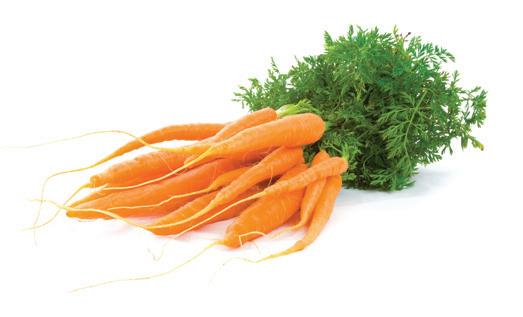
Beta-Carotene Bioavailability Study
Nutrient Availability: Chemical and Biological Aspects. Professor Joe A. Vinson et al. Royal Society of Chemistry, Scranton, USA. 1989
Food-Grown® Beta-Carotene is more bioavailable than synthetic isolate beta-carotene. Food-Grown® Beta-Carotene is more metabolised by the liver to vitamin A than USP beta-carotene.
FOOD-GROWN® Copper
Comparative human bioavailability of copper
Nutrient Availability: Chemical and Biological Aspects. Professor Joe A. Vinson et al. Royal Society of Chemistry, Scranton, USA. 1989
Food-Grown® Copper was 44% better absorbed than copper sulphate and 43% better absorbed than copper gluconate.
Food-Grown® Copper was also absorbed more slowly – a natural ‘time release’.
Food-Grown® Calcium was effective at lower doses than calcium gluconate in reducing diastolic blood pressure.


We don’t make our supplements, we grow them. Essential nutrients are carefully grown in food – transforming them into food too and increasing their potency. This is the secret power of FOOD-GROWN® supplements.
1. We begin with fresh, whole food
2. We use every part of the food
3. And reduce it to a fine food paste
4. The food paste is put in special tanks and enriched with super nutrients
7. This means the food paste recognises and allows the super nutrients into its matrix
5. Each super nutrient has a very high nutritional value
6. And has been cleverly attached to a glycoprotein
8. The super nutrients bond, grow and transform to become part of the food paste
9. The result is a super nutritious food paste that is bioavailable (your body will now accept the super nutrients and use them)
10. The super nutritious food paste is washed and spray-dried into powder
11. The powder is then encapsulated and packaged in protective jars